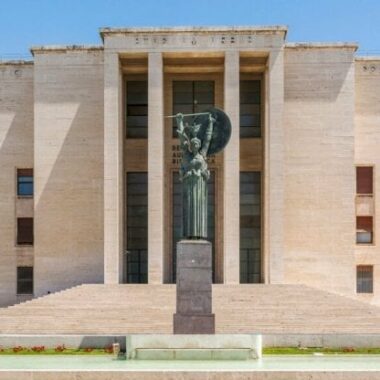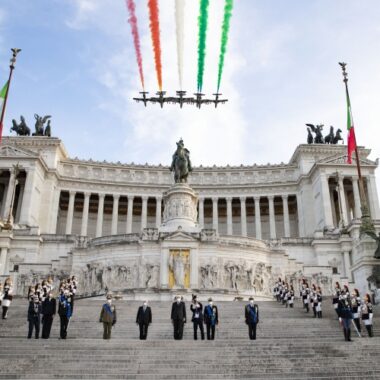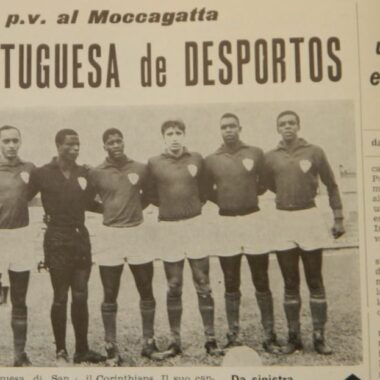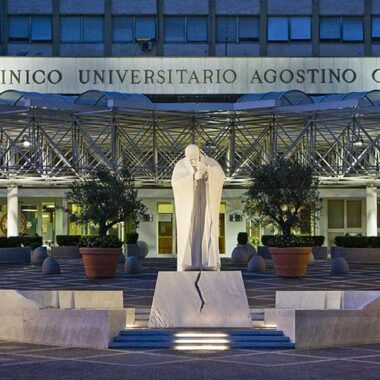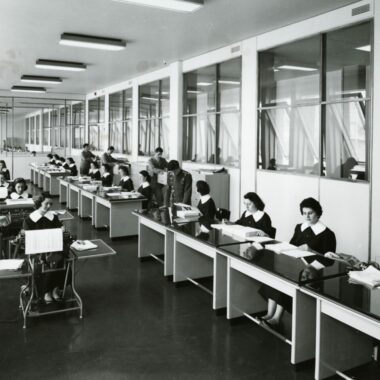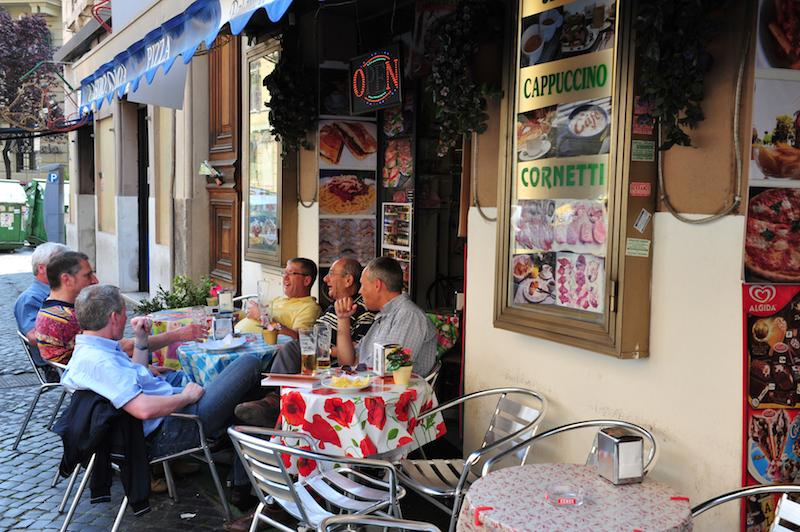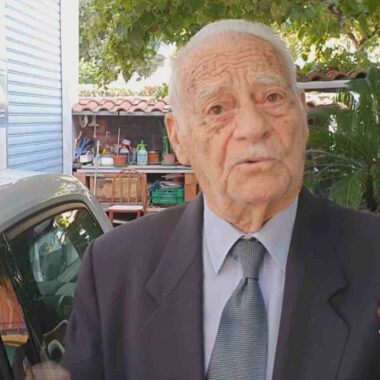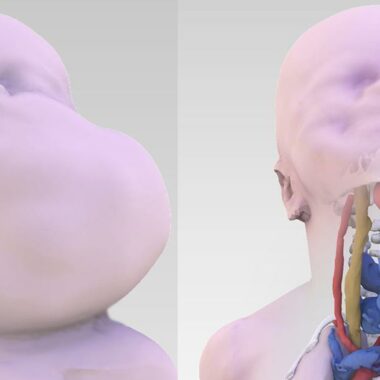In 2002, all EU member states abandoned their national currencies to embrace the euro. It has been 12 years, yet, in Italy the lira is still dearly missed: if we count the nostalgic, one may believe the change happened only a few months back. Truth is the lira had been our own currency since 1862, a symbol of the long desired and painfully achieved unity of the country that had only taken place a few months earlier, in 1861. Up to then, each state in the peninsula had its own currency, the financial division only exacerbating the political. No wonder that, in a sense, the introduction of a common coin became so important to the formation of a sense of unity for the Italians.

clear the effige of Italy’s first king
Vittorio Emanuele Secondo
(Pietro at wikimedia.org)

with the Savoia’s coat of arms
(Pietro at wikimedia.org)
The history of the lira is fascinating: in the course of time, denomination and sizes changed, some disappearing, some making a sudden entrance in the pocket of each and every Italian. Its value fluctuated throughout the years, influenced, as it happened to all currencies, not only by the economical, but also the political and social panorama of that given moment in time.
In 2002, we all said goodbye to the lira, but some of us still miss it: many Italians miss the beauty of those notes and the feel of those old coins, but the majority just believes the euro has made everyhting more expensive and regrets the old times. Truth, of course, is that it is not at all that simple, but nostalgia, we know, is indeed a hard beast to fight.
Lira coins and notes
As it happened to plenty of currencies in Europe, the lira has gone through several changes, both aesthetic and in value.
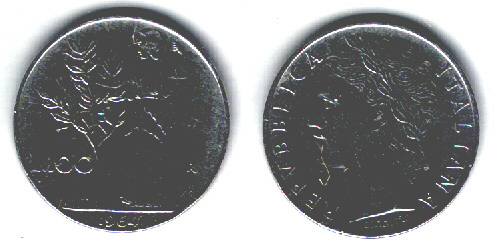
The period between the birth of the Italian Republic, 1946, and 1968, is probably when the highest number of currency values hit the streets: we had coins of 1, 2, 10, 20, 50, 100, 200 and 500 lire. The first bunch were eventually dropped in the eighties, as inflation made their value nil, whereas the 50 lire still kept a little place in our pockets up until 1999. 100, 200 and 500 lire coins resisted until lira‘s final decommision in 2002. Special editions of these coins were often created to celebrated important events, such as the 1990 Soccer World Cup, which took place in the country, or the anniversaries of the birth and death of essential figures of Italian culture.
Notes had a somehow less adventurous life. For a period, they were used instead of coins for values such as 10, 20, 50 and even 100 and 500 lire. 500 lire notes were still circulating well into the fifties, when inflation lowered the value of 500 lire and the notes were turned into coins. It is easy to see a pattern: coins were left for lower values, notes for higher.
Their shape changed throughout the decades, too, many of our granparents remembering the beautiful feeling of 1930s and 1940s style notes, much larger of those that replace them in later years. When eventually the lower values up to 500 lire were all turned into coins, only values from 1000 lire up were issued in paper form. We had 1000, 2000, 5000, 10,000, a short-lived 20,000, 50,000, 100,000 and 500,000 lire.
All of them started to be withdrawn when the euro came into force on January, 1st 1999, with the Prodi government establishing the rate of exchange of the euro to 1,936.27 lire. For three years, euro and lira cohabited side by side in our pockets, just as it happened with all national currencies in Europe. 1999 was also the last year in which lire were produced by the State mint and issued. In March 2002, the lira was finally decomissioned: that signed, to many, the final breath of an iconic part of Italian history and of the country’s culture.
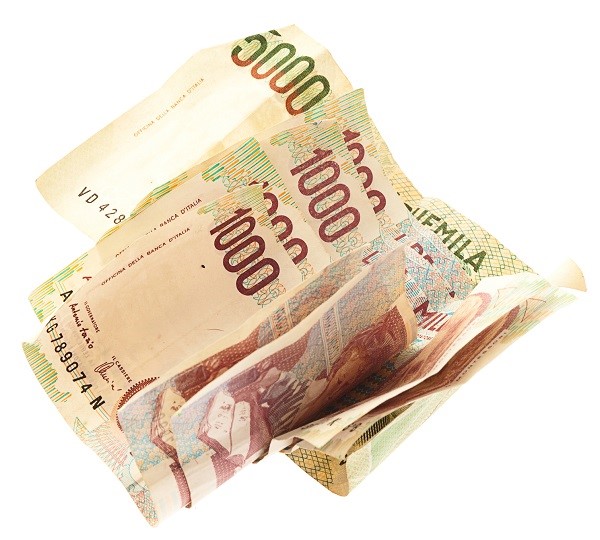
Ph. depositphotos/coolfonk
Criticism of the Euro and the evergrowing lira nostalgia movement
The movie Mille Lire al mese
When the government decided to join the monetary union, citizens were little aware of what such a change truly meant. However, as you would expect, criticism was quick to mount. Certainly, having one single currency for the majority of Europe made things much easier for those travelling for work or pleasure, and virtually eliminated the need of cumbersome exchange rate calculations, as well as the pain of ordering foreign currency at the bank and, of course, queueing to go get it. Something was also about to change, however, in our lifestyles: the agreed exchange rate between lira and euro inflated prices and ended, in certain instances, doubling them up in the space of only a couple of months. This change was not taken into account, however, when converting salaries and wages from lire into euro. To make it simple: the cost of living increased exponentially, but salaries did not. To be fair, this issue was common to the entire eurozone and not peculiar to Italy, only. People would go to the supermarket and have to spend twice as much with euro than they would have in lire, for the same type and amount of things.
It is easy to see how things panned out for those who had saved and invested money in the previous decades, too: if they did so in property of any kind, they saw its value increase up to twice as much. If, on the other hand, they saved or invested cash, they may have seen their money being halved in value.
And Today?
Truth is that, 15 years after the inception of the common EU currency and 12 years after the definitive disappearance of national currencies, in Italy the debate is still hot. The opinions are two and clashing: euro-skeptics, on one side, still regret the times of the lira and envisage a return to the old currency as a solution to the country’s economical crisis. This has been taken to a relatively serious level by the proposal by Beppe Grillo, Italy’s own comedian-turned-politician, to call for a referendum on the matter.
Euro-centrics, on the other hand, see the EU as an essential support to the country, which only has to gain from belonging to the Union. For them, naturally, joining the eurozone was a wise decision.

Ph. depositphotos/Orlando.B
Euro supporters consider a return to the past utterly impossible, as going back to the lira would not mean re-establishing the same economical and financial status quo of previous decades, but rather initiating a socio-economic cataclysm, involving a frightful increase in prices, with a consequent unwillingness of the banking system to make capital access possible to the majority of us.
If foreseeing the future is impossible, it seems realistic to believe that a return to the lira would be sign of a series of major changes in the social, political and economical fabric of the country. We cannot forget that the common currency is not only a financial matter, but also part of that wider, pan-european project that the European Union is: stemmed from the brutality and the pain of two World Wars in the space of 30 years, the European Union was, in the end, founded also by Italy. Saying no to the euro, after having joined it and, in fact, worked towards its implementation, would not only represent a step back and a change in what we use to pay our bills and our food, but would also strike a profound change of the country’s direction against a unified Europe. A unified Europe we, as Italians, have worked to create since the 1950s.
Author: Anna De Filippo
Edited by Francesca Bezzone, 11/06/2014








